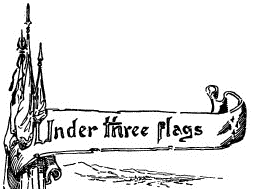|
the United States Bought Louisiana |
|
|
Iagoo, in Hiawatha, thus describes the coming of the white men to the Indian territory:
"O'er it, said he, o'er this water |
|
|
|
|
|
|
|
|
|
|
32 |
|
|
|
|
Thomas Jefferson, President
of the United States, decided to buy this vast tract of
land, which extended from British America on the north to
the Gulf of Mexico on the south, and from the Mississippi
River on the east to the summit of the Rocky Mountains, and
contained 562,330,240 acres of land, for which the United
States paid $15,000,000, or 2 3-5 cents an acre. Out of the
Louisiana purchase thirteen states have been wholly or
partially made, Louisiana, Missouri, Arkansas, Iowa,
Minnesota, Kansas, Nebraska, Colorado, Montana, South
Dakota, North Dakota, Wyoming and Oklahoma; Colorado,
Minnesota, Wyoming, Kansas, Montana and Oklahoma include
some territory, however, which was not in the Louisiana
purchase. |
|
|
|
|
33 |
|
|
It was a long, toilsome
trip up the river, rowing against the current, the waters of
the stream often lashed by the wind and rain. The heat,
being intense at times, those on board were almost overcome,
but they finally arrived July 11, at a point opposite the
mouth of the Big Nemaha River. July 15, they camped on the
Little Nemaha and on the 18th rested just above the place
where Nebraska City now stands. Going farther up the river
they reached a point about fourteen miles above the present
site of Omaha and there held the first Indian Council,
August 3, 1804, with fourteen Otoes and Missourians, who had
a French interpreter. |
|
|
34 |
|
|
|
|
a man greatly feared by his own as well as other tribes
because any one who displeased him might meet death in a
mysterious manner. It is said that a trader once gave him a
quantity of arsenic and this he gave to his enemies with
fatal results. Black Bird, the Omaha Chief, died of
smallpox, four years before the visit of Lewis and Clark,
and was buried on the top of a high bluff that he might see
the traders coming up the river. We are told his weapons and
the scalps he had taken in war were tied to a pole above his
grave, and that his favorite horse was here put to
death. |
|
|
|
|
35 |
|
|
the Lewis and Clark expedition before she was seventeen,
she unconsciously was a valuable aid in opening to
civilization the great northwest. |
|
 |
 |
 |
MARDOS COLLECTION
© 1999, 2000, 2001 for the NEGenWeb Project by Pam Rietsch,
T&C Miller

